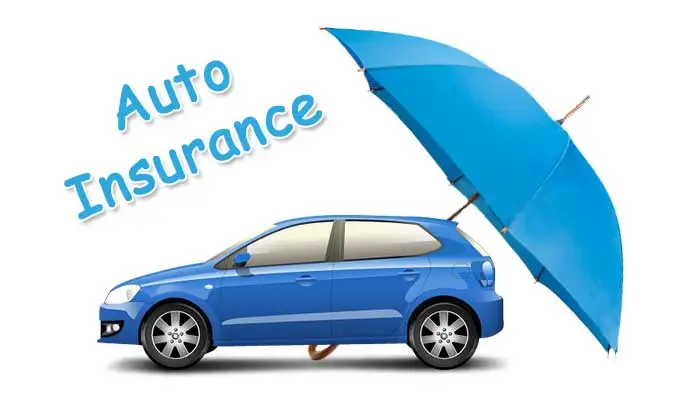Automobile insurance in the United States is not just a legal requirement in most states but also a critical financial safeguard for drivers. With a complex landscape of coverage options, regulations, and factors influencing premiums, understanding how auto insurance works can significantly impact both your safety on the road and your financial well-being.
Mandatory Coverage of Automobile Insurance in USA
In the USA, every state except New Hampshire mandates some form of automobile insurance. The minimum requirements typically include:
1. Liability Insurance: This covers bodily injury and property damage that you may cause to others in an accident where you are at fault. Each state sets its minimum liability limits, such as 25/50/25 (which covers $25,000 per person for bodily injury, $50,000 per accident for bodily injury, and $25,000 for property damage).
2. Personal Injury Protection (PIP) or Medical Payments**: Some states require coverage for medical expenses resulting from injuries to you or your passengers, regardless of fault.
3. Uninsured/Underinsured Motorist Coverage: This protects you if you’re involved in an accident with a driver who has insufficient or no insurance.
Optional Coverages of Automobile Insurance in USA
Beyond the mandatory requirements, drivers can opt for additional coverages to enhance their protection:
1. Collision Coverage: This pays for damage to your vehicle caused by a collision with another vehicle or object.
2. Comprehensive Coverage: Covers damage to your vehicle from incidents other than collisions, such as theft, vandalism, or natural disasters.
3. Gap Insurance: If you lease or finance your vehicle, gap insurance covers the difference between what you owe on the vehicle and its actual cash value if it’s totaled.
Factors Affecting Premiums
Several factors influence the cost of auto insurance premiums in the USA:
1. Driving Record: A history of accidents or traffic violations can increase premiums.
2. Age and Gender: Younger drivers typically pay higher premiums, as do males statistically more prone to accidents.
3. Location: Urban areas with higher traffic congestion and crime rates often have higher premiums.
4. Type of Vehicle: The cost to repair or replace your vehicle, as well as its safety record, affect premiums.
5. Credit Score: In many states, insurers use credit scores to determine premiums, believing a lower score correlates with a higher likelihood of filing claims.
Shopping for Insurance
To find the best insurance coverage at a competitive rate, it’s crucial to compare quotes from multiple insurers. Consider factors beyond price, such as customer service reputation, claims processing, and the ease of reaching customer support.
Understanding Insurance Terms
Before purchasing auto insurance, familiarize yourself with common terms and conditions:
1. Deductible: The amount you must pay out of pocket before your insurance kicks in.
2. Policy Limits: The maximum amount your insurer will pay for a covered claim.
3. Exclusions: Specific circumstances or types of damage not covered by your policy.
Benefits of Automobile Insurance in USA

Automobile insurance provides a range of benefits that are crucial for both drivers and society as a whole. Here are some key benefits:
1. Financial Protection
Automobile insurance offers financial protection against potential losses resulting from accidents, theft, vandalism, or other covered incidents. Without insurance, individuals would bear the full financial burden of repairing or replacing their vehicles, paying for medical expenses, and potentially facing legal costs from liability claims.
2. Legal Compliance
In most states in the USA, having automobile insurance is a legal requirement. This ensures that drivers have the means to cover liabilities they may incur in accidents they cause. Compliance with these laws helps maintain order on the roads and ensures that victims of accidents can be compensated appropriately.
3. Medical Coverage
Many auto insurance policies include coverage for medical expenses resulting from injuries sustained in car accidents. This coverage, often referred to as Personal Injury Protection (PIP) or Medical Payments coverage, can help pay for hospital bills, rehabilitation costs, and even lost wages due to injury.
4. Protection Against Uninsured Motorists
Uninsured/Underinsured Motorist Coverage is another important benefit of auto insurance. This coverage protects you if you’re involved in an accident with a driver who doesn’t have insurance or doesn’t have enough insurance to cover your damages. It ensures that you’re not left financially vulnerable due to someone else’s lack of coverage.
5. Peace of Mind
Having automobile insurance provides peace of mind to drivers, knowing that they are financially protected in case of unexpected events on the road. This peace of mind extends beyond just the financial aspect and contributes to overall mental well-being while driving.
6. Property Damage Coverage
Insurance policies can cover damage to your vehicle caused by accidents, collisions with other vehicles or objects, vandalism, theft, and natural disasters. This coverage ensures that repair or replacement costs are covered, reducing the financial impact of such incidents.
7. Legal and Financial Support
Auto insurance often includes legal assistance and financial support in case you are sued following an accident. This can cover legal fees, court costs, and settlements or judgments up to the limits of your policy, sparing you from potentially devastating financial consequences.
8. Supporting the Economy
The automobile insurance industry supports the economy by providing jobs, investing in infrastructure, and contributing to government revenues through taxes and fees. It also enables the broader economy by ensuring that businesses and individuals can continue operating despite unexpected losses.
Conclusion
Navigating the world of automobile insurance in the USA involves understanding legal requirements, choosing appropriate coverage, and managing premiums effectively. By educating yourself on these aspects, you can make informed decisions that protect both yourself and your vehicle on the road.
Whether you’re a new driver or looking to reassess your current policy, taking the time to understand your options and rights under automobile insurance laws can save you both time and money in the long run. Stay informed, stay safe, and enjoy the peace of mind that comes with being adequately insured.
Also, Check Out,
